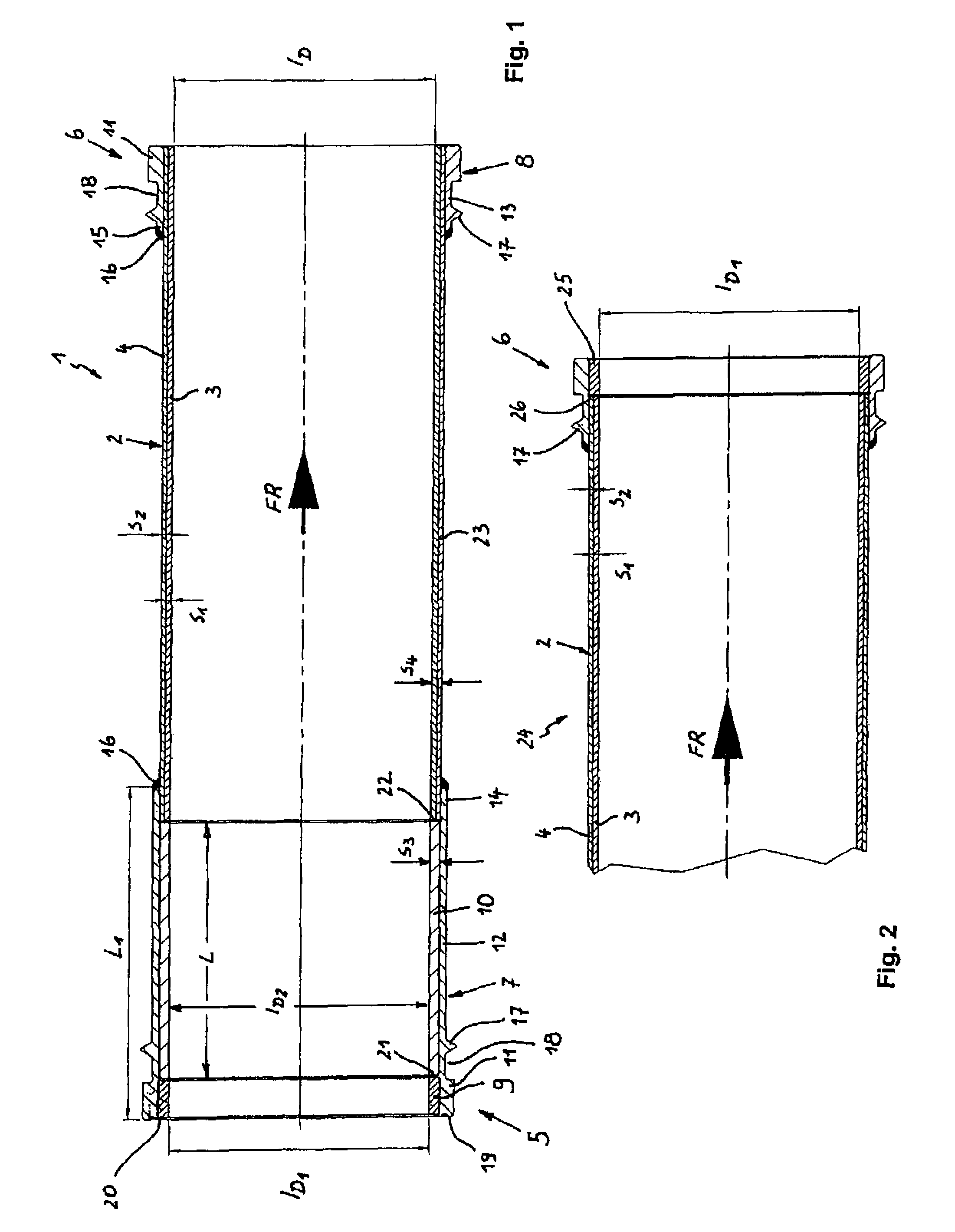Delivery pipe for the transport of solids
a technology for solids and pipes, applied in the direction of flexible pipes, rigid pipes, pipes, etc., can solve the problems of increased wear on the inlet side, disproportionately high wear, and the effect of increasing the service li
- Summary
- Abstract
- Description
- Claims
- Application Information
AI Technical Summary
Benefits of technology
Problems solved by technology
Method used
Image
Examples
Embodiment Construction
[0025]Arrow FR designates the delivery direction in each of FIGS. 1 and 2.
[0026]FIG. 1 shows a delivery pipe 1 that has a double-layer pipe body 2 which includes a highly wear-resistant, hardened inner pipe 3 and a pressure-resistant outer pipe 4. The wall thickness of the inner pipe 3 is referenced with s1, the wall thickness of the outer pipe 4 is referenced with s2. It can be seen that the wall thickness s1 of the inner pipe 3 is greater than the wall thickness s2 of the outer pipe 4.
[0027]Coupling collars 7 and 8 are secured on the inlet-side pipe end 5 and the outlet-side pipe end 6, respectively. Received in the inlet-side coupling collar 7 are a first wear ring 9 and a second wear ring 10 arranged in succession in the longitudinal direction of the pipe body 2. The first wearing material 9 is made of wear-resistant and impact-resistant material, such as a ceramic material, a chromium carbide cast, a martensitic nickel-containing wear-resistant cast iron (Ni-hard), or similar w...
PUM
 Login to View More
Login to View More Abstract
Description
Claims
Application Information
 Login to View More
Login to View More - R&D
- Intellectual Property
- Life Sciences
- Materials
- Tech Scout
- Unparalleled Data Quality
- Higher Quality Content
- 60% Fewer Hallucinations
Browse by: Latest US Patents, China's latest patents, Technical Efficacy Thesaurus, Application Domain, Technology Topic, Popular Technical Reports.
© 2025 PatSnap. All rights reserved.Legal|Privacy policy|Modern Slavery Act Transparency Statement|Sitemap|About US| Contact US: help@patsnap.com


